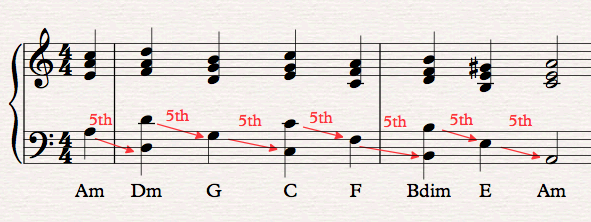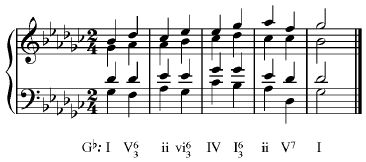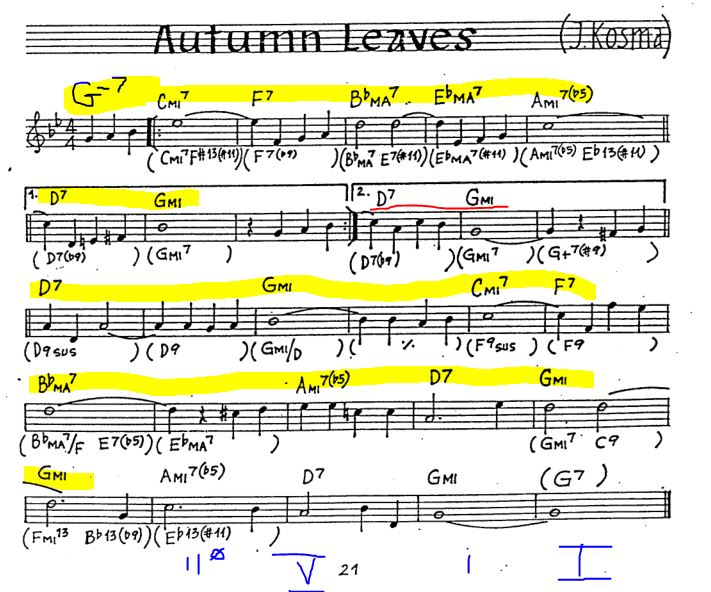Music is a mix of calm and chaos; push and pull; yin, and yang. Phrases and cadences help to bring order to music and create expectations for the listener, but it’s not exciting if everything is predictable. Sequences help to create a new texture within a piece that strays away from the expected using melodic and/or harmonic elements.
A sequence is made when a musical idea is expressed then restated immediately one or more times, with each restatement transposed down or up from the previous one by a consistent interval. The basic musical idea – normally a half or full measure or two measures – is the sequence pattern; the interval by which it is transposed is called the level of transposition.
The Musician’s Guide to Theory and Analysis, Third Edition p. 368
Sequence patterns can be melodies repeated and transposed – melodic sequences. They can also be consistent patterns of intervals between the soprano and bass – linear intervallic patterns. Sequences, in many cases, combine melodic sequences, LIPs, bass movements, and root progressions with exact transposition of the pattern throughout. Sequences function to expand the tonic or provide a nice escape route from one key center to another.
Virtual Insanity by Jamiroquai is a perfect example of sequences. Take a listen below.
“Virtual Insanity” is a song by British funk band Jamiroquai. It was released as the second single from their third studio album, Travelling Without Moving (1996), on 19 August 1996. The song’s award-winning music video was released in September 1996. “Virtual Insanity” was a number-one hit in Iceland and reached number three on the UK Singles Chart. As well as becoming a top-ten hit in Finland, Ireland, and Italy, the song also climbed to number 38 on the BillboardModern Rock Tracks chart upon the single’s release in the United States in 1997. The sight of an underground town in Sapporo provided inspiration to this song.
https://en.wikipedia.org/wiki/Virtual_Insanity
Types of Sequences
Descending 5th Sequences
The circle of fifths provides the framework for the descending 5th sequence and it is commonly heard in many songs because it is repetitive in the outer voices and other musical elements. This sequence can start anywhere within the following patterns: I – IV – vii° – iii – vi – ii – V – I or i – iv – VII – III – VI – ii° – V – i

This video by Greg D’Alessio explains everything about the descending fifth sequences and their relation to the circle of fifths. He goes in-depth about what makes the sound so popular and the things that make it work.
Thomas Gunther explains different ways of playing the descending fifth progression. This is a good resource for pianists and arrangers.
Ascending 5th Sequences
The circle of fifths provides the framework for the ascending 5th sequence also except you go counter-clockwise. This sequence can start anywhere within the following patterns: I – IV – vii° – iii – vi – ii – V – I or i – iv – VII – III – VI – ii° – V – i

Pachelbel Sequence
This sequence was popularized by Johan Pachelbel in his Canon and Gigue for 3 violins and basso continuo PWC 37 and it has been used in countless songs ever since. The progression goes down a fourth, then up a second until the cadence arrives. The pattern goes I – V – vi – iii – IV – I – ii 6/5. If you pay attention to the pattern you will see the descending thirds: I – vi – IV – ii
The basslines in Pachelbel sequences can descend in 4ths and ascend by step or they may descend stepwise by alternating root position and first inversion chords.

This video on the Musica Universalis channel explains the history, construction, and usage of the Pachelbel sequence.
Descending Parallel 6/3 Chords
Descending parallel seconds are found when there is a chain of root progression seconds. Rather than allowing a string of parallel fifths and octaves to occur, first inversion chords are added in between the root position chords.
Youtube Resources
Sequences in Autumn Leaves
Sequences are built into many songs, and the song, Autumn Leaves, makes extensive use of a descending fifth sequence throughout.
The main theme of the song is a string of 2 bar sequences that begins on the 3-beat anacrusis in G minor and continues onto the whole note tied to a quarter note. The sequence takes you from the tonic, G minor, through the circle of fifths and back to the tonic. ]This motif is transposed down by seconds on each pass until the motif’s harmony arrives back at Gmin.
i – iv7 – VII7 – III7 – VI7 – iim7b5 – V7 – i
The song briefly goes between the dominant and tonic harmonies before repeating the descending fifth sequence from G minor.
The song ends on: iimin7b5 – V – i – I

